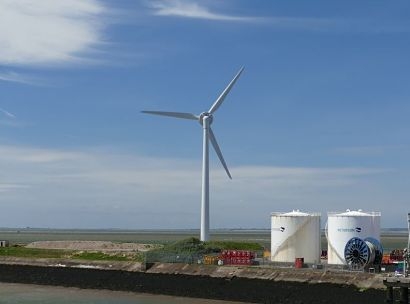
Wind turbine supplier EWT Direct Wind has highlighted how on-site wind turbines can help businesses in the commercial and industrial sectors reduce costs and carbon emissions. With many such businesses facing pressures to cut their carbon footprint, a new report shows how self-generation projects can reduce carbon emissions and make money.
According to EWT, on-site wind energy generation and self-consumption provides a way for companies to stay competitive on both emissions and energy costs. Projects pay for themselves in five to ten years, depending on wind conditions and percent of energy used locally. After this period, projects will continue to generate profits for many years to come.
In Onsite Generation: Cutting Costs and Cutting Carbon, EWT highlights how self-consumption projects can suit many types of businesses. Medium scale turbines for on-site use have easier planning procedures in Germany and the UK. In Germany for instance, such turbines can be built outside of designated wind zones if over 51 percent of energy is consumed on-site.
“It is vital for businesses to think about decarbonising now, before their commercial operations are hurt by high energy prices and regulations on carbon emissions” said Rob Van de Veerdonk, Chief Marketing and Sales Officer, EWT. “At EWT, we believe the right approach to developing and building self-consumption wind energy projects can make this transition simple for businesses across the commercial and industrial sectors. Right now, businesses across Western Europe are looking to reduce their carbon footprint – and not just big tech firms. High-intensity energy users at the mercy of power prices can benefit hugely from adopting wind turbines and generating their own power.”
The report offers insight into the logistics of on-site generation, from planning, development, and financing to operation, and shows how projects have been successfully developed for carbon and cost-conscious businesses in the UK and Germany. The report guides users through a check-list of considerations to identify their suitability for an on-site generation self-consumption wind energy project prior to engaging a professional feasibility study.
For additional information:

